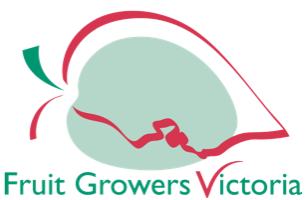
The recent discovery of myrtle rust in Victoria late last year, on top of outbreaks in both Queensland and New South Wales can’t help but make you think about the changes this disease could bring to the horticultural industry and way we view (and value) the Australian landscape. What value do we give a tree that has been around for years; seen many changes of government and shaded generations of Australians? What value do we give the public park around the corner, our tree lined streets, highways, national parks?

While we are all working hard to control the spread and make detection part of the solution forward, what if this isn’t enough. All Myrtaceae species is at threat. These are everyday native specimens, some state floral emblems, trees that have traditionally grown on medium strips, along roads, country properties and in backyards. These trees include all forms of Eucalyptus, Syzygium (Lilly pilly), Acmena, Waterhousea, Melaleuca (paperbark), Leptospermum (tea tree), and Callistemon (bottlebrush) just to name a few.
While we are all working hard to control the spread and make detection part of the solution forward, what if this isn’t enough. All Myrtaceae species is at threat. These are everyday native specimens, some state floral emblems, trees that have traditionally grown on medium strips, along roads, country properties and in backyards. These trees include all forms of Eucalyptus, Syzygium (Lilly pilly), Acmena, Waterhousea, Melaleuca (paperbark), Leptospermum (tea tree), and Callistemon (bottlebrush) just to name a few.
In ten years’ time, under the influence of this invading pest, what will our native landscape look like?
While we are not here to generate hysteria, we would hate to think that it takes a horticultural disaster to make everyone realise the importance of trees to our lifestyle. While this disease only affects native specimens, and their replacement will result in the planting of other non-myrtaceae and/or exotic tree varieties, it may herald the start of a new looking Australian landcape. Rest assured the Horticultural industry is doing everything in its power to detect, manage and/or remove this threat to our most treasured of native species. Can you imagine our lives devoid of trees altogether? Of course not. But to not realise their worth, particularly in the face of this disease, is disappointing and detrimental to our every day lives.
More Trees Please!
The Nursery & Garden Industry Australia, together with their state counterparts have taken up the challenge of educating the public on the importance and value of trees to the community with ‘More Trees Please’. This is the second phase of the ‘Plants Life Balance’ campaign designed to get people thinking about the value of trees in their environment, their practical application and associated mental health benefits. So what does it mean to have a ‘plant life balance’? Most of us understand the notion of a ‘work life balance’ so if we apply the same theory to this concept, we also need to re-discover our balance with nature. This is relevant to all of us as individuals and collectively as inhabitants of earth.


Speciality Trees is a supporter of the NGIA industry initiative to grow the Australian urban forest by planting more trees.
In real terms, we are talking about concrete versus greenlife, hard surfaces versus porous ones, green versus grey.
A tool developed by the United States Department of Agriculture’s Forest Service called i-Tree is now available to assist councils, developers and town planners with defining the economic value of urban forests within a community. For the first time, decision-makers can consider new housing developments as well as existing estates in terms of heat exchange rates caused by exposed surface temperatures, and can assess sun, wind and rain protection upon the community it houses based on the existence of trees in the landscape design.
Most importantly this new tool aims to put a monetary value on the intangible aspects of living in an aesthetically pleasing, recreationally inspiring, tree-lined community. That has got to be good for everyone's health!
For more information, click here.
Receive all the latest news, product information, collections, projects, tips and special offers straight to your inbox each month or so.
Receive all the latest news, product information, collections, projects, tips and special offers straight to your inbox each month or so.
Treefinder can help you identify the perfect tree for your next project!
With over 400 tree varieties for review, the Treefinder app enables you to conveniently browse and compile a list of trees suitable for a number of common landscaping uses - from attracting birds to creating a formal screen or hedge. By selecting desired size, foliage, and a few categories, Treefinder opens up a world of possibilities.
Once you've found the perfect tree you can click through to our website for more information, availability and a quote.

We are specialists in the environmentally sustainable production of premium quality advanced landscaping trees and screens.
For more than 49 years Speciality Trees has been a leader in the production and supply of advanced environmentally sustainable, containerised landscape trees for local government, the landscaping industry and retailers.
Learn more







